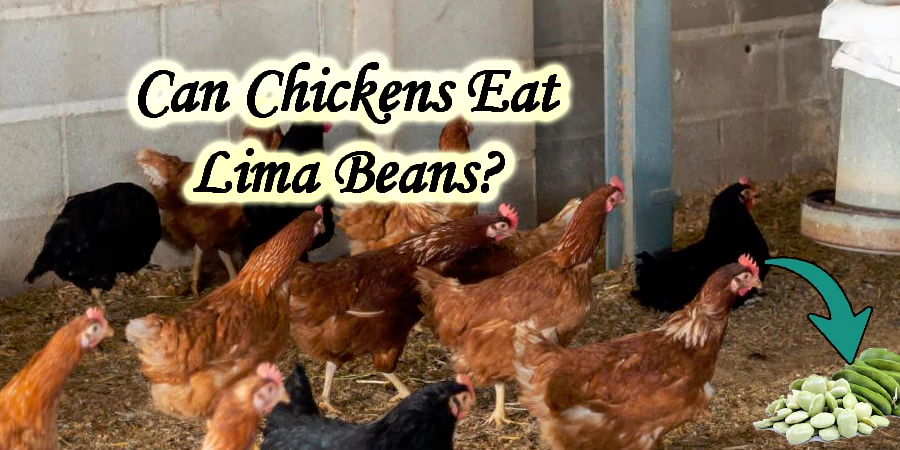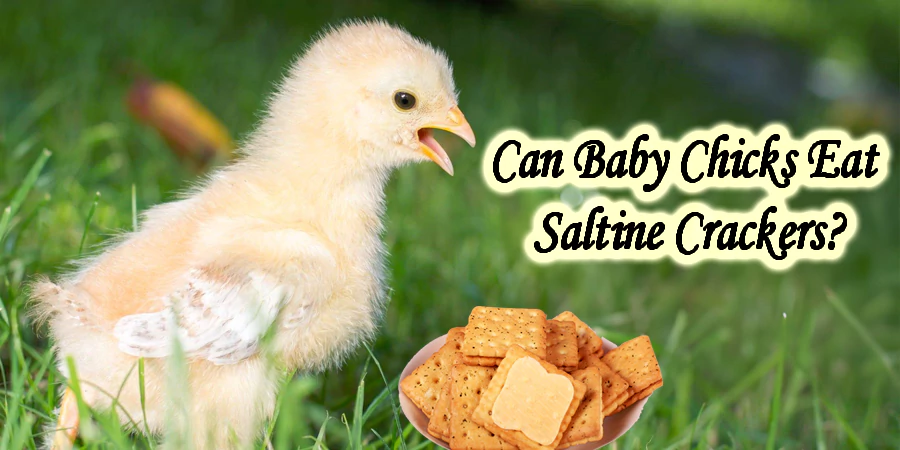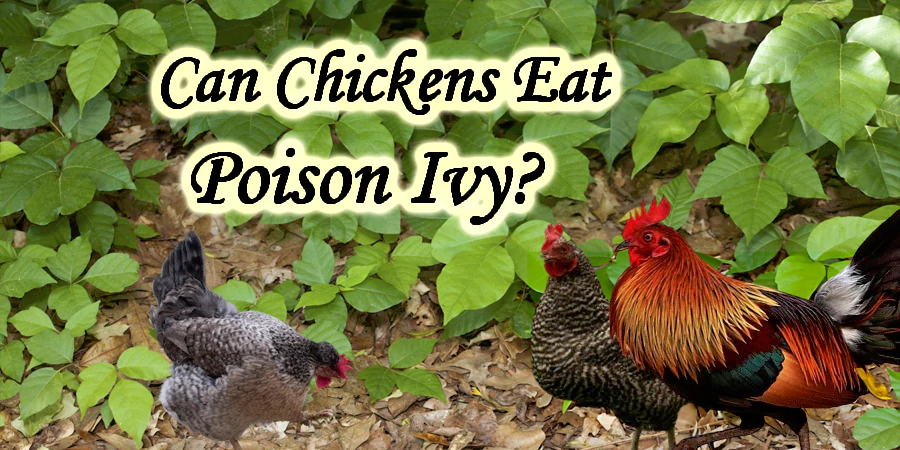Can Chickens Eat Lima Beans: A Realistic Approach
Published: 12 Jan 2024
Introduction
Chicken enthusiasts have raised numerous concerns about the culinary needs of chickens and can chickens eat Lima beans is one of them. In this article, we are going to decipher the secrets of the Lima beans and the dietary needs of chickens. It is very easy to answer mere YES or No but we will provide an in-depth analysis of feeding Lima bean to chickens.
We will analyze whether Lima beans have enough nutrient profiles to fulfill the needs of chickens. A careful understanding of the benefits and drawbacks of feeding Lima to chickens helps answer this query. We will also review the myths about Lima beans as chicken’s food. If there is any problem in the availability of Lima beans we will give you alternative foods for chickens. So, let’s start our journey…

Can chickens eat Lima beans: An in-depth examination
What Are Lima Beans?
Lima beans are kidney-shaped edible legumes that belong to the Fabaceae family. Lima beans are cultivated by ancient farmers in Central America. The name Lima beans are associated with a city of Peru “Lima”. It has a sweet nutty flavor and a creamy texture. Lima beans are divided into two types the large or butter-bean Lima beans and the small or baby Lima beans. Both have the same texture and flavor. Lima beans are available in white, green, and speckled variations.
Nutritional Value of Lima beans
Lima beans are full of nutrients. In fact, due to its nutrient profile, it is used in the regular diet of chickens. It has proteins, carbohydrates, fiber, minerals, vitamins, and antioxidant content. Here is the composition of the nutrient profile of Lima beans…
- Protein Content: Proteins play a vital role in the development and performance of chickens. Lima beans contain 7.8 grams of proteins per 100 grams.
- Fiber Content: Fiber is essential for optimal digestion and bowel movements for chickens. Lima beans have 7 grams of fiber per 100 grams.
- Carbohydrate Content: Carbohydrates represent the energy levels of chickens. Lima beans have 19 grams of carbohydrates per 100 grams.
- Vitamin Content: Lima beans are full of Vitamin B (B1, B6, and B9) and C. These vitamins help in the development and optimal functioning of chickens.
- Mineral Content: Lima beans contain Iron (oxygen supply in the blood), Magnesium (optimal metabolism), and Potassium (regulate blood pressure)
- Antioxidant Content: Antioxidants are very useful in protecting from chronic ailments of chickens. Lima beans have flavonoids and carotenoids.
Do Chickens Like to Eat Lima Beans?
Like humans, chickens do have their individual culinary preferences. The mild nutty flavor and creamy texture attract the chickens but you have to intrigue them. According to the experience of many poultry enthusiasts, their feathered friends have shown their interest in eating Lima beans. The nutrients in Lima beans also enticing for their taste buds.
In general, we can say that chickens are fond of eating Lima beans. What you can do is serve them in a way that entertains them. We will give you knowledge about some of these effective methods. To make Lima beans a delightful portion of their diet, you should gradually introduce them to your backyard flock.
How to Prepare Lima Beans for Chickens?
We have been convinced of its nutrient value but the preparation process can damage its effectiveness. The following steps guarantee you the optimal digestion and healthy growth of chickens.
- Always feed the fresh and dried Lima beans to your chickens.
- Ensure that Lima beans are free from mold, pests, and spoilage.
- To avoid choking issues, select the adequate variety for your flock.
- Thoroughly wash it with water to remove the dust particles.
- To enhance its palatability, cook the Lima beans.
- Adding any sort of flavor is not recommended during the cooking process.
- For a safe and comfortable meal, cool the Lima beans.
- Gradually introduce the Lima beans to your flock to avoid digestive upset.
- Observe the reaction from chickens after serving the Lima beans.
- Adjust the feeding scheme according to your observation.
Engaging Ways of Feeding Lima Beans to Chickens
After preparing the meal the next step is to incorporate it into the regular dietary plan in an engaging way. It is also beneficial to follow the guidelines that will ensure the overall well-being of your flock. Here we have enlisted some of the engaging ways to feed Lima beans to chickens.
- Chickens like to have cooked Lima beans because of their soft texture. After boiling or steaming Lima beans, let them cool down to a palatable temp.
- To make Lima beans more enticing, Mash it after cooking. It is also advised to mix these mashed beans with other grains to ensure a well-balanced diet.
- Rinse Lima beans and let them sprout. It will make easy-to-digest feed for chicken and increase its nutritional value.
- You can mix Lima beans with other seeds, beans, and grains that are already in use and liked by your flock.
- To ensure the equal distribution of nutrients in feed you can apply the pelleted formulation. It will also make the serving process a bit easier.
- Use the quantity of Lima beans according to the requirement of your flock considering their age, size, and breed.
- To ensure the diversity in chicken’s dietary plan, you must rotate the various types of feeding techniques randomly.
Is Uncooked Lima Beans Bad For Chickens?
According to the observation of many chickens’ owners, Uncooked Lima beans can be hazardous for chickens. Here are some of the main reasons behind the non-recommendation of feeding Uncooked Lima beans.
- Protease inhibitors: These anti-digestive compounds are present in abundance in uncooked Lima beans as compared to cooked Lima beans.
- Phytic Acid: This acidic content affects the absorption of minerals like iron, calcium, and phosphorus. Cooking Lima beans helps to reduce their activities.
- Lectins: It causes digestive upset, irritation, and inflammation. Uncooked Lima beans possess higher levels of this toxic protein.
- Tannins: It is also a toxic component of Lima beans that hinders the absorption of nutrients. Uncooked Lima beans have higher levels of tannins.
- Bitterness: Uncooked Lima beans have bitterer flavor than cooked Lima beans. Chickens don’t like this bitterness and avoid eating the food.
- Hard to Digest: Raw/uncooked Lima beans are hard to digest for Chickens. Cooking makes it more palatable and easier to digest as well.
- Less Nutrient Value: Uncooked/ raw Lima beans have less nutrient value as compared to cooked Lima beans.
Can Baby Chickens Eat Lima Beans?
Yes, feeding lima beans to chicks is useful for their optimal growth. Baby chickens are more sensitive and prone to be affected by toxic content. So, it is inevitable to take these precautionary measures before feeding Lima beans to chicks.
- Cooked Lima beans: Baby chicks like to eat cooked Lima beans because of their softer texture. Cooking also neutralizes the anti-nutrient agents.
- Mashed Lima beans: Baby chickens are more prone to face choking issues therefore use Lima beans in mashed format.
- Moderation: Always feed the mashed and cooked Lima beans in small quantities considering their age and size to avoid digestive upset.
- Well-balanced diet: Although Lima beans are full of nutrient content they should be mixed with a regular diet to fulfill their dietary needs.
- Age Consideration: Chicken at an early age is very sensitive and should be introduced to a starter diet plan.
- Avoid Uncooked Lima Beans: It is strictly prohibited to feed uncooked Lima beans to baby chickens because of their toxic content.
- Observe Reaction: The most important aspect is to observe the reaction of the chicken after feeding the Lima bean and adjust accordingly.
How Much Lima Beans Should You Feed Your Chickens?
The dietary needs of chickens vary due to various factors. We must consider the age, size, and breed. As we have already discussed Lima beans are full of nutrients but we have to adjust according to the situation. Here are some key factors that every chicken enthusiast must consider…
- Moderate Introduction: Moderate and gradual introduction of Lima beans is very important to avoid digestive issues.
- Age of Chickens: The dietary needs of chickens increase as they get older. During early days use a starter diet or small volume for baby chicks.
- Size of Chickens: To avoid nutrient imbalance you must feed the chickens according to their size. Increase the volume with larger sizes of chickens.
- Use as a secondary diet: It is very important to understand that Lima beans are not a primary diet for chickens. So, include other grains and seeds.
- 10% of the total Feed: There is no fixed volume of Lima beans that you can feed to chickens but generally keep it less than 10% of the total diet.
- Observation: After feeding Lima beans to the flock you must cautiously observe their response and adjust feed quantity accordingly.
Can Chickens Eat Lima Bean Leaves?
After taking some precautionary measures you can use Lima beans for your flock but not in the case of Lima beans leaves. Lima bean leaves are hazardous for chicken’s health as they contain various toxic agents. Toxic agents like lectin are found in Lima beans leaves that resist the absorption of nutrients. Cyanogenic glycosides are harmful ingredients of Lima beans leaves.
Eating Lima beans leaves can cause digestive imbalance and nutrient deficiency issues in chickens. Lima beans leaves also have a bitter flavor that affects their palatability. Keeping in view these harmful consequences, it is advised to keep Lima beans leaves away from your flock.
Can Chickens Eat Cooked Beans?
Yes, Chickens do like to eat cooked Lima beans for various reasons. Cooking the beans makes it softer and increases its palatability. Secondly, it reduces the harmful effects of various toxic agents present in raw Lima beans. Cooked Lima beans have higher levels of nutrients as compared to raw beans. The softer texture allows the chickens to chew and digest the Lima beans.
Protein content is very vital for chickens’ growth and optimal egg production. Cooked beans are a good source of proteins for chickens. The cooking process can add a touch of pleasant flavor to feed that entices the chickens. Moderate intake is a key factor and cautious adjustment of feed stands in every phase.
Can Chickens eat Frozen Lima Beans?
Yes, Chickens can eat the frozen Lima beans by following some guidelines. Lima beans must be thoroughly washed before the freezing process. It will help to remove the anti-nutrient agents from Lima beans. It is better to cook these thawed Lima beans to completely get rid of toxic agents. You should not use seasonings or additives that can be harmful to chickens.
Again, I will reinstate that the volume must not increase by 10% of the total diet of chickens. Moderation is key. Careful observation is essential after serving the Lima beans to inspect any signs of allergies or discomfort in chickens. The frozen Lima beans add diversity to the regular feed of chickens. If you find anything unusual then must call for veterinarian.
Can Chickens Eat Sprouted Lima Beans?
Yes, Sprouted Lima beans are a good addition to the regular diet of your flock. It increases digestive functions. Chickens like to eat sprouted Lima beans for their crispy texture and pleasant flavor. The sprouting process also reduces the anti-nutrient agents making beans more digestible for chickens. Always use the fresh and decontaminated sprouted Lima beans for good results.
The sprouting action initiates the enzymatic process in Lima beans which promotes the nutrients. So, thoroughly wash the Lima beans and let them sprout. When offering sprouted lima beans, always focus on the golden role of moderation. Monitor the reaction from chickens and adjust the feed according to the preferences of your flock.
Benefits of Lima Beans for Chickens?
As we have already pointed out its healthy impacts for chickens if incorporated in moderation with some safety measures. Here are some potential benefits of Lima beans for chickens. If one or more signs of allergic reaction are observed then immediately call the professional veterinarian.
|
Risks Associated With Feeding Chickens Lima Beans?
It is never a wise decision to see only one side of the picture. Besides the benefits of Lima beans we must consider some of its negative impacts as well. Here are some of the drawbacks/ concerns of feeding Lima beans to chickens.
|
Signs of allergies in chickens
It is very important to cautiously observe any sign of digestive upset or intolerant behavior from chickens. We have collected data from experienced chicken keepers and presented it here as a guideline for all chicken enthusiasts. Let’s explore the most common signs of allergic reactions in chickens.
1. Digestive Upset: A problem in the digestion process is a clear indication of allergies. Diarrhea and unusual droppings are the most common signs of digestive upset.
2. Lack of activity: Lethargic behavior from chickens is also a confirmation of an allergic reaction. It shows that they are not tolerating the feed efficiently.
3. Decrease in Egg Production: The allergies affect the digestion and cause mental stress for chickens which disturbs the egg production.
4. Difficult breathing: It is not a direct impact of allergies. Indirectly, feeding spoiled Lima beans can cause respiratory issues in chickens.
5. Abnormal Response: Chickens behave unusually also a sign of Allergic reaction. Impatience, agitation, and disinterest in eating are abnormal behavior.
Alternatives to Lima Beans For Chickens
Chickens do like to eat a varied diet. You have many options available to diversify Chicken’s diet plan as per your preferences. Here are some compatible alternative foods for your flock.
Peas: Chickens love to enjoy a delightful treat with Peas. Peas contain a decent volume of nutrients required for the optimal growth of chickens. Snap Peas are a famous dietary option and can be served in both raw and cooked form.
Seeds: Seeds are commonly used in mix-trail for chickens. They prevent choking problems in chickens. Seeds are loaded with fats and nutrients. The common types are flax seeds, pumpkin seeds, sunflower seeds, and chia seeds.
Fruits: Chickens are crazy to peck on fruit’s flesh. They are packed with high amounts of minerals and vitamins. The most common fruits used for poultry feed are bananas, apples, dragon fruit, and persimmons.
Vegetables: Vegetables are a natural source of vitamins and minerals. Chicken lovers prefer to serve a nutrient-rich diet with safety measures. Spinach, Lettuce, Collard greens, and Kale are famous for their nutritional benefits.
Conclusion
After a conclusive study of facts related to benefits and risks, feeding techniques, preparation methods, and precautionary measures, now we can reply to the age-old query “Can chickens eat Lima beans?” So, our convinced opinion is YES, Chickens can eat Lima beans. Lima beans can be added to a regular diet and it will be a nutritious addition for sure.
If you are going to feed Lima beans to your flock then must consider some recommendations. Always use it as a secondary diet, prioritize the cooked Lima beans, follow the moderation policy, feed mashed Lima beans, never compromise on the freshness of Lima beans, and carefully observe any sign of allergic reaction. Feeding Lima beans will surely diversify the diet plan that is liked by chickens. I know chickens’ health is our priority, so act wisely and enjoy your journey with healthy feathered companions.

- Be Respectful
- Stay Relevant
- Stay Positive
- True Feedback
- Encourage Discussion
- Avoid Spamming
- No Fake News
- Don't Copy-Paste
- No Personal Attacks

- Be Respectful
- Stay Relevant
- Stay Positive
- True Feedback
- Encourage Discussion
- Avoid Spamming
- No Fake News
- Don't Copy-Paste
- No Personal Attacks


